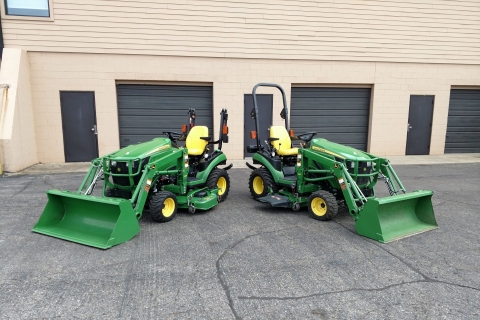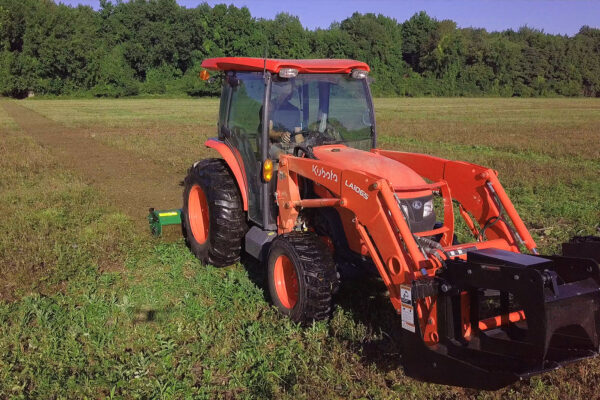What’s the difference between a John Deere 1025r and 1026r? Well, not much to tell the truth. If it weren’t for the EPA changes back in the 2012 timeframe, then we’d most likely still be looking at a 1026r and the 1025r wouldn’t exist. Either of these machines can be considered the premium sub-compact tractor on the market. You just won’t find the 1026r beyond a model year 2012 or 2013 if some dealers chose to market their leftover stock as such.
The video overview highlights these similarities and a small handful of the differences. This should really open up the market for prospective buyers to also include the 1026r in their searches as it is essentially an identical machine. The same loaders and mowers were available on each tractor along with the same standard features such as fender mounted work lights, tilt steering, cruise control, a rear mount work box, and more.
Did much change under the hood? The simple answer is no. Some very minor tweaks were made to accomplish the objective of reducing horsepower to 25HP versus 26HP. In 2013, the EPA instituted Tier 4 emissions which pushed 26HP and higher tractors into a difference classification that required regen systems such as DPF (diesel particulate filter), DEF (diesel exhaust fluid), and so on. Not only do these systems add additional and unwanted cost to the machine, but they also are another maintenance item to deal with periodically.
SHOP GOOD WORKS TRACTORS INVENTORY! WE CAN SHIP ANYWHERE IN THE CONTINENTAL US!
So, you can see why the 1026r was essentially rebranded the 1025r. This wasn’t due to some sort of performance issue with the 1026r, poor sales, or faulty design, rather it was to remain competitive in the sub-compact tractor market. These two models will be identical in dimensions, weight, and capability. Additionally, any attachment you can get for the 1026r can also be purchased for the 1025r.
With all the different tractors models floating around out there, it can be tough to know what is what. What are you giving up going from one model to another. It seems there’s always a trade-off. Well, about the only trade-off here is going to be cost. You’re 1026r tractors are going to be older machines versus the 1025r. Therefore, you should expect to pay less for a similarly equipped and conditioned 1026r vs 1025r. I hope this helps clear up some confusion and opens up the market for others in the market for a sub-compact tractor. While Kubota makes a good machine, you just can’t be the yellow and green in this frame size. But, that’s a discussion for another day. Thanks for reading.


